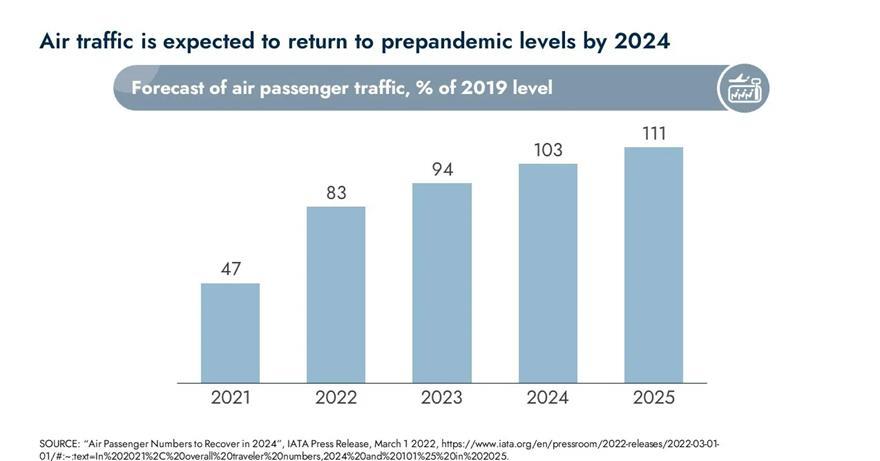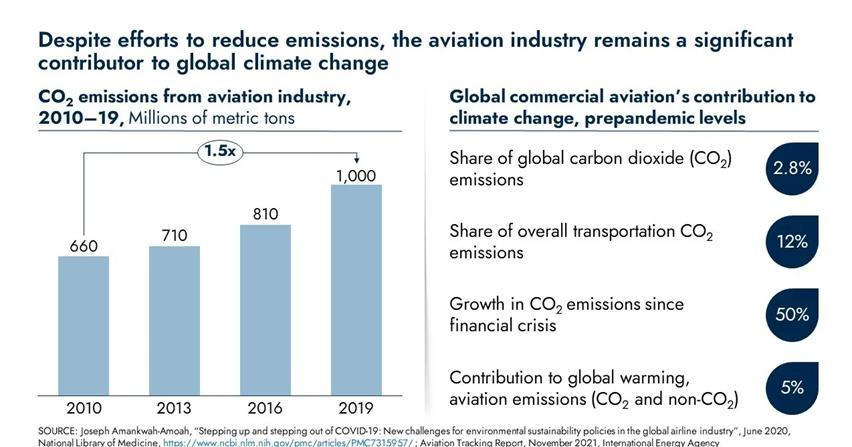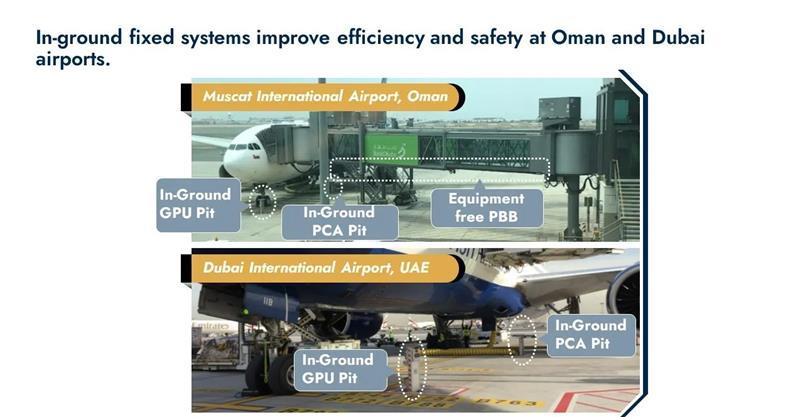




Airports and other aviation sector players are developing strategies to provide seamless experiences at sustainable, digitally connected facilities in anticipation of post-pandemic demand growth.
An important sector of the global economy, the airport industry is undergoing a massive transition in anticipation of a post-pandemic recovery. The number of passengers using domestic and international airlines increased six fold between 1980 and 2018, from 0.8 million to 4.5 million annually. Airport traffic fell by 60% worldwide as the virus spread in 2020, affecting every region equally. Nevertheless, a rebound quickly followed, and airport traffic is predicted to increase through 2025, reaching 111% of 2019 levels, and to reach 83% of 2019 levels in 2022, surpassing 2019 levels in 2024 (Exhibit 1).
Exhibit 1

Four key factors will influence how airports change as they strive to satisfy demand. First, demands for more environmental sustainability are coming from consumers, society, investors, and governments, and they aren’t necessarily happy with the direction things have taken thus far (Exhibit 2). Airports are experiencing a labor shortage at the same time as other employers, which makes investing in technology more alluring. Another force bringing about change in airports is the passengers themselves, who demand smooth and secure travel. Additionally, the infrastructure of airports is becoming less and less capable of handling all these demands, particularly given the rise in passenger volume. Airport management will aim to create an airport of the future that is digitally equipped, sustainable, and ready to provide
a flawless experience to everyone who visits or works there in order to meet the challenges that lie ahead.
Exhibit 2

By implementing significant changes to their operations and design, airports are responding to each of the transformation drivers. Airports are becoming more environmentally friendly in response to sustainability demands. Examples include sustainable aviation fuel (SAF) infrastructure for fuel-efficient aircraft, eco-friendly ground handling, efficient ground service operations, on-site renewable energy generation, and energy management systems installed throughout the airport (Exhibit 3). Airports are using automation such as robotic terminals, driverless cars, and even drones to solve labor shortages while enhancing productivity and consumer satisfaction. Airports are investing in contactless technologies, artificial intelligence (AI), data analytics, and cloud computing to improve the smoothness of the travel experience. Additionally, they are spending money on infrastructural improvements to construct sizable terminals with more green space and improved ventilation that can adapt easily to changing purposes.
Exhibit 3

This digital, sustainable transition involves a number of stakeholders in the aviation ecosystem (Exhibit 4). They consist of the government, airlines, ground handling service providers, ground service equipment OEMs, and project teams and administration from airports. Some of these groups are taking the initiative and acting early.
Exhibit 4

As the many stakeholders prepare to contribute to the development of digital and sustainable airports, there are five essential components that must align to expedite the shift (see Exhibit 5). The implementation of comprehensive stakeholder engagement strategies, the establishment of rules and procedures, the accessibility and incorporation of technology, sufficient funding for infrastructure projects, and long-term market dynamics that support profitable returns on investment are these.
Exhibit 5
Over the past year and a half, there have been positive indications that the demand for air travel is on the rise again, and there are still high hopes for quick supply chains that involve air freight when time is of the utmost. All this is made possible by airports. Simultaneously, travelers seek flawless travel experiences, and investors and the public demand energy conservation. To digitally and sustainably address the diverse needs of stakeholders, a shift is necessary. That change will take many forms. It is fully within the industry’s reach with visionary leadership, technological understanding, and committed management.
View Source:- https://medium.com/@Ayna.ai/the-future-of-airports-39340b953229